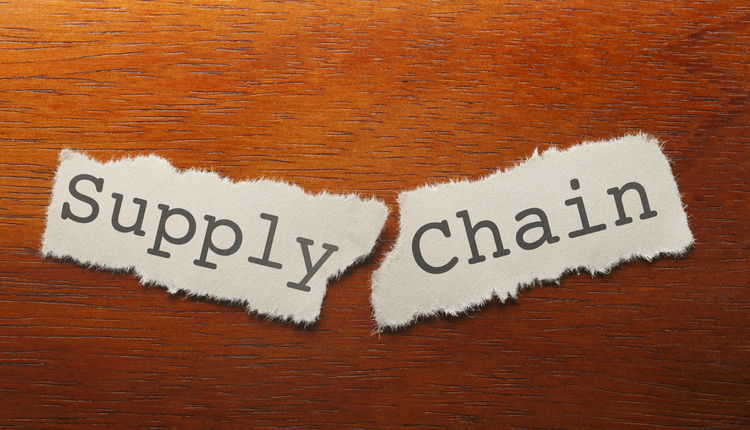This article appeared in the Fall 2018 International Issue.
“In Globalization 1.0, which began around 1492, the world went from size large to size medium. In Globalization 2.0, the era that introduced us to multinational companies, it went from size medium to size small. And then around 2000 came Globalization 3.0, in which the world went from being small to tiny.”
-Thomas Friedman, New York Times columnist and Pulitzer Prize winning author
Trade makes the world go around, and with friendly trade agreements, healthy economies, and the advancement of technology, global trade has become simpler, faster, and demanded by consumers across the globe. Trade agreements such as NAFTA, economic blocs including the European Union and the Association of Southeast Asian Nations (ASEAN), and international global organizations like the World Trade Organization have helped advanced global trade. Healthy economies have led to the demand for imports from emerging markets and between developed countries while the advancement of technology has resulted in shipment visibility, enhanced booking capabilities, as well as much easier carrier, rate, and mode of transport comparisons.
In 2017, global merchandise trade, in terms of volume, grew at a 4.7% growth rate, which was the strongest rate since 2011. Benefiting from a rising demand for imports around the world, globalization reached its zenith.
Political rumbles pointing toward protectionism have put the future growth of global trade into question. The UK’s vote for Brexit and the US’ exit from the Trans-Pacific Partnership (TPP), renegotiation of NAFTA, and the implementation of tariffs have all set off alarms. However, in the midst of this concern is a trend that will be difficult to stop regardless of added protectionist measures – the transformation of business-to-business (B2B) and business-to-consumer (B2C) to online transactions.
Global B2B and B2C e-commerce, combined, are valued at well over $1 trillion. Supply chains are adapting to this phenomenon with technology investments and implementations for efficiency gains as well as quicker fulfillment and faster last-mile delivery times. For example, the realization that physical stores do matter in the new retail environment has resulted in unique supply chains for both pure-play e-commerce providers including Amazon, Alibaba, and others as well as traditional players including Macy’s, Target, and Walmart.
Cross-Border Trade Flourishes
Among the fastest growing segments of e-commerce is cross-border. According to Forrester Research, cross-border will make up 20% of e-commerce by 2022. The market research firm notes that consumers want to shop across borders so they can find cheaper products and buy goods that are not available in their market. Retailers see cross-border commerce as a way to enter new markets with low upfront investment. Marketplaces are driving this demand for cross-border demand, with cross-border sales accounting for nearly 25% of third-party units sold on Amazon.
Carriers, 3PLs, forwarders and others have responded to this demand by creating specialized solutions to aid cross-border growth. UPS and FedEx, for example, have made acquisitions of niche solution providers, i-parcel and Bongo, respectively, as well as to expand their international networks.
As protectionism takes hold around the world, global trade will continue but probably at a slower pace. Avoidance or reduced dependence on trade partners that practice protectionism will likely occur and, as a result, an emphasis on regional trade could emerge. This could take the shape of Europe trading among itself or with Asia while the US primarily trades within North America.
In 2013, China introduced its Silk Road or One Belt, One Road initiative. The goal has been to resurrect and modernize Marco Polo’s thirteenth century trade route between Europe, the Middle East, and China. Rail routes, warehousing, ocean ports, and more have been established in the modern-day version, thus economically linking China, the Middle East, and Europe. Since this is an extremely expensive investment, some political experts question China’s ultimate reasons behind this endeavor. According to the state-owned China Rail Company, by 2027, 21 daily trains traveling between China and Europe, or about 636,000 twenty-foot equivalent units (TEU), are expected.
What Lies Ahead?
Protectionism will result in the development of new trade lane patterns and, once again, carriers, 3PLs, and forwarders will adjust with new solutions and services. As part of their ongoing services, logistics and transportation providers often serve as trusted advisors to their clients, monitoring changes in rate, capacity, customs duties, risks, or new markets and trade.
As protectionist measures grip global trade, shippers could be faced with higher costs that may ultimately be passed down to consumers. Indeed, we here in the US have seen this already. The price of washing machines in the US, for example, increased 20% following tariffs on metal imports.
A bigger shift towards marketplaces may occur as businesses and consumers alike search for lower priced goods. As noted by Forrester, one reason that consumers shop cross-border is so they can find cheaper goods. The same will probably occur between businesses. Amazon’s B2B marketplace, Amazon Business, has already recorded $10 billion in revenue in just the two years it has been running. Furthermore, it’s not just small- to medium-sized businesses that are utilizing the marketplace. According to Amazon, 55 of the Fortune 100 companies, are as well.
Global trade will not end, but with the increasing number of tariffs implemented, trade agreements can disband and political tensions mount. Instead, trade will evolve and adapt to the environment. Higher shipping costs may occur, but as long as shippers have a trusted logistics/transportation partner, they should be able to ride the wave of uncertainty.
John Haber is founder and CEO, Spend Management Experts.
Click here to return to the Global Logistics and Delivery topic page.



















